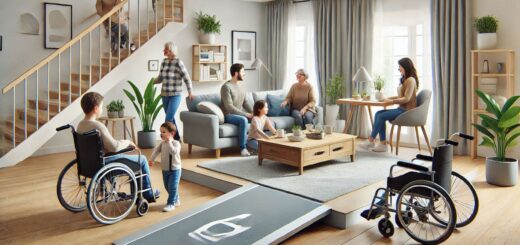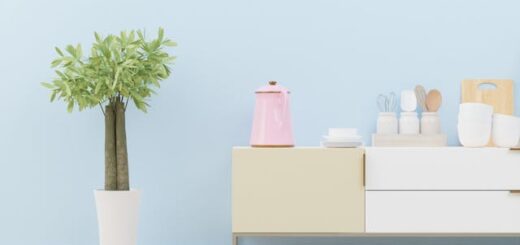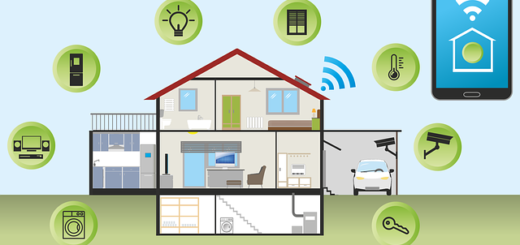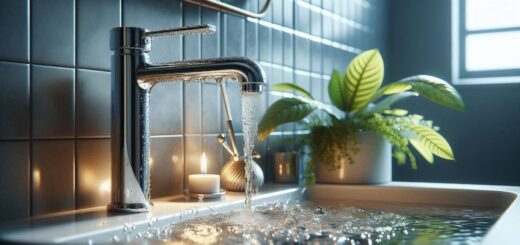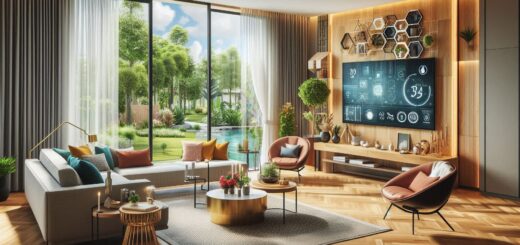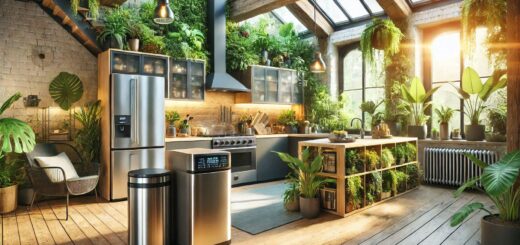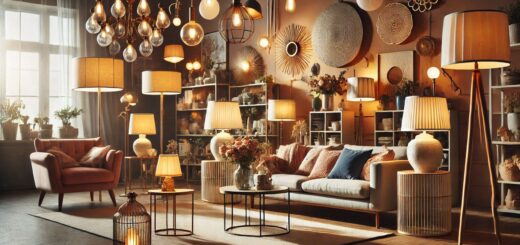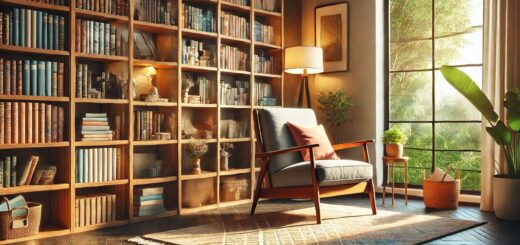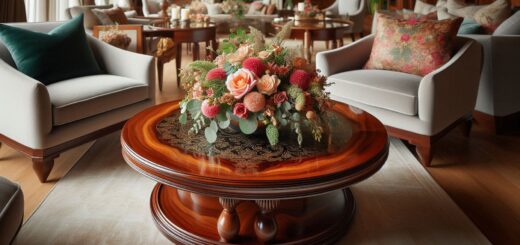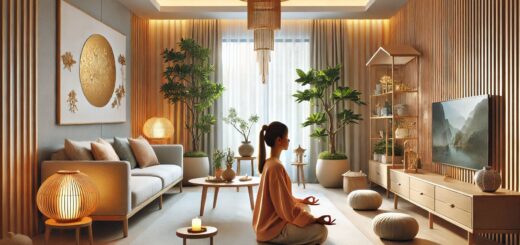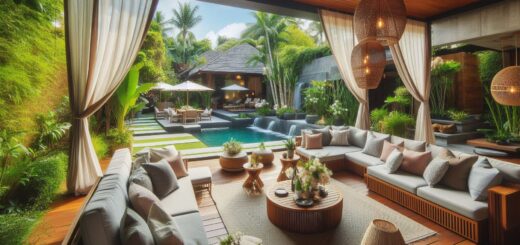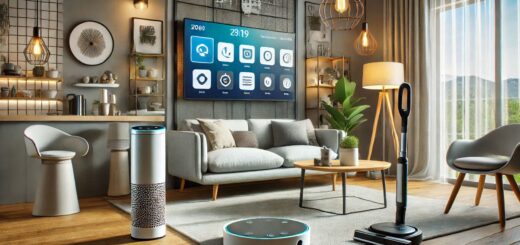Top 10 Up-and-Coming Home Design Trends to Watch in 2025
The world of home design evolves as society embraces innovation, sustainability, and individuality. By 2025, home trends reflect a deeper focus on wellness, technology, and personal expression. From biophilic designs to the resurgence of vintage aesthetics, homeowners are adopting trends that balance functionality with style. This guide explores the top 10 up-and-coming home design trends you should watch in 2025.
Table of Contents
Why Should You Care About Your Home Design?
Your home design isn’t just about aesthetics—it’s a reflection of your personality and a space where you recharge, create memories, and feel secure. A well-designed home improves functionality, boosts mental well-being, and can even increase property value. It’s about creating a sanctuary that truly feels like you.
Moreover, thoughtful design choices can make your daily life more efficient and enjoyable. From smart storage solutions to layouts that encourage better interaction with family, every detail matters. By investing in your home design, you’re not just decorating a space—you’re crafting an environment that supports your lifestyle and goals.
10 Emerging Home Design Trends to Look Out for in 2025
Get ready to refresh your living spaces with the hottest design trends of 2025. From sustainable materials to multifunctional furniture, these innovative ideas are set to redefine modern homes. Discover how style meets functionality in ways that promise to make your home more inviting and future-ready.
1. Biophilic Home Design: Embracing Nature Indoors
Biophilic design is all about feeling more connected to nature within your home. It focuses on blending natural elements into your living space to create an atmosphere that feels relaxing and refreshing. Imagine sitting by a window that offers a perfect view of a garden or having a wall filled with cascading greenery. Adding natural touches, like the gentle sound of a water feature, makes the environment even more soothing and enjoyable.
Key Materials and Elements
To achieve a biophilic design, consider incorporating the following:
- Natural Materials: Use elements like stone, bamboo, and timber for a warm, organic feel.
- Greenery: Decorate with potted plants, hanging gardens, or even an indoor tree to bring life into your home.
- Lighting: To brighten spaces and make them feel airy, install skylights, large windows, or glass doors to maximize natural light.
Each of these adds a distinct natural touch that transforms your home into a peaceful retreat.
Why It’s Trending
In today’s fast-paced urban life, many people crave a quiet escape from the concrete jungle. Biophilic design offers that escape by integrating elements of nature right into their homes. Studies have shown that being surrounded by greenery and natural features can reduce stress, improve mood, and even boost productivity.
Whether it’s a small corner with plants or an entire room designed with nature in mind, this trend gives homeowners a chance to create a more balanced and calming environment—a place to unwind and recharge.
2. Sustainable Materials: Eco-Friendly Choices for Home in 2025
Sustainability is no longer just a buzzword—it’s shaping the future of home design. Homeowners are increasingly choosing materials that are both environmentally friendly and stylish. From reclaimed wood that tells a story to bamboo that grows back faster than it’s used, these materials are showing up in everything from flooring to kitchen cabinets. They’re practical, durable, and add a touch of personality to any space.
Why Sustainability Matters
People today are more aware of how their choices affect the planet. Sustainable materials help reduce the carbon footprint by using resources responsibly and limiting waste. They don’t just look good; they last longer, making them a smart investment. Plus, many eco-friendly materials, like recycled steel or reclaimed wood, come with unique textures and patterns that make your home stand out while staying kind to the environment.
Popular Applications
Here’s how sustainable materials are being used to create functional and stylish spaces:
- Furniture: Tables, chairs, and shelves made from reclaimed wood are not just eco-conscious but also full of character.
- Flooring: Bamboo and cork flooring are growing in popularity due to their renewable properties and natural aesthetic.
- Decor: Accessories like vases, mirrors, and light fixtures crafted from recycled glass or metal add charm while reducing waste.
- Cabinetry: Recycled steel or wood cabinets bring a modern, eco-friendly touch to kitchens and bathrooms.
As sustainability becomes more important in everyday life, choosing these materials allows you to design a home that aligns with your values while staying practical and visually appealing.
3. Smart Home Integration: Technology Meets Functionality
The idea of a “smart home” is no longer futuristic—it’s here and growing fast. Today, homes are equipped with systems that handle lighting, security, and climate control automatically, making life easier and more efficient. These technologies are now more affordable, simpler to use, and tailored to fit any lifestyle, from tech enthusiasts to those just getting started.
What’s New in 2025?
Smart home technology is evolving rapidly, with new features designed to make daily living even smoother. Some highlights include:
- AI-Powered Systems: Smart systems now learn user habits, like when you wake up or prefer certain light settings, and adjust automatically for improved convenience and energy savings.
- Energy Management Tools: Solar panels are increasingly paired with apps that track energy production and consumption, helping users manage costs and reduce waste.
- Voice-Controlled Features: Devices like Alexa or Google Home are becoming central to managing the home’s ecosystem, from turning on lights to adjusting thermostats—all with a simple voice command.
Advantages of Smart Home Integration
- Convenience: Automated systems save time by handling repetitive tasks, like setting the perfect room temperature or locking the doors at night.
- Cost Savings: Energy-efficient devices and smarter management can lower monthly bills.
- Comfort: Customizable settings ensure your home is always just the way you like it.
- Security: Advanced smart cameras and locks give you peace of mind whether you’re home or away.
As technology continues to integrate seamlessly into our lives, smart homes offer a perfect blend of comfort, functionality, and efficiency.
4. Multifunctional Spaces: Designing for Flexibility
In today’s world, where remote work and multi-generational living are becoming more common, homes must adapt to changing lifestyles. That’s where multifunctional spaces come in—rooms designed to serve multiple purposes. Instead of having a separate office, guest room, or playroom, homeowners are finding clever ways to combine these functions into a single, efficient area without compromising on style or comfort.
Key Ideas for Multifunctional Spaces
To make a space more versatile, consider these creative approaches:
- Convertible Furniture: Pieces that can change their form are game-changers. Think Murphy beds that tuck away neatly during the day, foldable desks that create instant workspaces, or extendable tables that adapt for dining or crafting.
- Zoning Techniques: Creating distinct areas within a room is easier than it seems. Use dividers like bookshelves or curtains, rugs to define spaces, or adjustable lighting to set the mood for different activities.
- Innovative Storage: Custom-built storage solutions can help you make the most of every corner. Hidden compartments, under-bed drawers, or wall-mounted units keep spaces clutter-free and functional.
Why Multifunctional Spaces Are Popular
The demand for flexible rooms is growing because they make homes more practical and future-proof. For instance, a guest room that doubles as an office or a living room with hidden storage for toys and work supplies allows families to adapt to their needs without constantly remodeling. These spaces are perfect for making every square foot count, especially in smaller homes or apartments.
By blending creativity with functionality, multifunctional spaces help you achieve a home that works harder and smarter for your lifestyle.
5. Earthy Color Palettes: Colors That Connect with Nature
Earthy color palettes are taking center stage in 2025, bringing the warmth and serenity of nature into homes. Shades like terracotta, sage green, muted browns, and soft beiges are not just easy on the eyes—they create a calming atmosphere that feels grounded and inviting. These natural tones work well in various styles, from minimalist to rustic, making them versatile for any home.
Combinations and Accents
Pair earthy tones with metallic accents like bronze, gold, or brushed brass to create a harmonious look. These elements add a touch of elegance without stealing the spotlight. If you want to introduce a bit of contrast, use vibrant colors sparingly—like a pop of mustard yellow or deep teal in pillows or art pieces. This keeps the space interesting without overwhelming the soothing vibe of the main palette.
Popular Uses
Earthy colors shine in various applications, including:
- Walls: Painting your walls in terracotta or sage green instantly adds warmth and depth to any room.
- Upholstery: Sofas and armchairs in muted browns or beiges offer a timeless and cozy feel.
- Decor Pieces: Accessories like rugs, vases, and throw blankets in natural hues tie the entire room together.
These tones not only bring a sense of tranquility to your home but also make it feel more connected to nature. Whether you’re doing a complete makeover or adding subtle touches, earthy color palettes are a simple yet impactful way to refresh your space in 2025.
6. Maximalist Decor Revival: Saying Goodbye to Minimalism
Minimalism’s clean lines and restrained palettes are making way for the bold and expressive charm of maximalism. This decor style encourages homeowners to embrace individuality through layers of colors, patterns, and textures. It’s not about clutter but rather curating a space filled with character and creativity. Maximalism allows you to showcase your personality unapologetically, offering a refreshing shift from the understated trend of the past.
How to Adopt Maximalism
If you’re ready to bring a touch of maximalism into your home, start with these ideas:
- Focus on Patterns: Introduce floral, geometric, or abstract prints through wallpaper, cushions, or rugs. Mixing patterns is key to achieving a dynamic look.
- Layering: Combine multiple textures to create depth. For example, pair velvet cushions with silk curtains or a chunky knit throw over a leather sofa.
- Personal Touches: Display items that reflect your story—whether it’s a collection of travel souvenirs, family heirlooms, or bold artwork that speaks to your taste.
Benefits of Maximalism
This trend is all about freedom and fun. It allows you to experiment with design elements and create spaces that feel uniquely yours. Unlike minimalism, there’s no pressure to hold back. A maximalist room can exude energy and warmth while still being functional and inviting.
By embracing maximalism, you’re not just decorating a home; you’re creating an environment that celebrates who you are. Whether you go all-in or start small, this trend is a perfect opportunity to design with passion and personality.
7. Indoor-Outdoor Living Fusion: Blurring the Lines
The concept of indoor-outdoor living is growing in popularity as homeowners seek to make the most of their outdoor spaces. This trend is all about creating a seamless flow between the indoors and outdoors, making both areas feel like one cohesive space. Whether you’re entertaining guests or simply relaxing, blending these two environments enhances your lifestyle by offering more functional and enjoyable spaces.
Ideas for Indoor-Outdoor Design
To make this fusion work, consider incorporating the following elements:
- Outdoor Kitchens: These setups include grills, refrigerators, and preparation spaces that make outdoor dining feel like an extension of your kitchen. Perfect for gatherings, they turn your backyard into an entertainment hub.
- Living Walls: Bring the outdoors in by creating green walls that seamlessly flow from your living room to your patio. This brings a natural, calming vibe to both spaces.
- Sliding Glass Doors: These are ideal for maximizing openness. When you open them, your home feels more expansive and airy, and the transition to the outdoor space is effortless.
Why It’s So Appealing
This trend not only makes your home feel larger but also invites more natural light and fresh air. The ability to easily move between indoor and outdoor spaces adds a sense of freedom and connection to nature. Whether you have a spacious garden or a small balcony, indoor-outdoor living can be adapted to fit any space, enhancing your home’s functionality and your lifestyle.
8. Vintage and Retro Influences: Timeless Aesthetics
Vintage and retro design influences are making a strong comeback, adding a touch of nostalgia and personality to modern homes. From mid-century modern furniture pieces to lighting that draws inspiration from the Art Deco era, vintage items are being reimagined and paired with contemporary elements to create unique, stylish spaces. It’s all about mixing the old with the new, giving each room a sense of history and individuality.
How to Mix Vintage with Modern
If you’re thinking of blending vintage pieces into your home, here are a few tips to strike the right balance:
- Combine Antique Furniture with Modern Decor: A vintage armchair or coffee table can be paired effortlessly with modern accessories. The key is to allow the old pieces to stand out while complementing them with clean lines and minimalist touches.
- Add Retro Patterns: Incorporate patterns from past eras through textiles like rugs, throw pillows, or curtains. Floral prints or geometric designs from the 60s and 70s can bring a burst of personality to a room.
Why It’s Popular
Vintage items are more than just old furniture—they bring something special to a space. They carry a sense of history, offering stories and character that mass-produced modern items often lack. Plus, vintage pieces are often one-of-a-kind, making your home feel more personal and unique. As a result, they’ve become a way for people to stand out and express their individuality through their home decor. Whether it’s a treasured antique or a retro-inspired lamp, incorporating these pieces adds a timeless, stylish touch to any space.
9. Textured Walls and Surfaces: Adding Depth and Dimension
In 2025, textured walls will replace flat, boring white surfaces. Homeowners are looking for ways to add visual interest and tactile appeal to their spaces. Textured walls don’t just look great—they invite touch, adding depth and warmth that flat surfaces can’t provide. Techniques like Venetian plaster or 3D wall panels are gaining popularity as they make a bold statement while enhancing the overall ambiance of a room.
Applications of Textured Walls and Surfaces
Here’s how you can integrate textured surfaces into your home:
- Feature Walls: Use textured finishes or wallpapers on one wall to make it the focal point of the room. It’s a great way to bring personality and style without overwhelming the space.
- Ceilings: Textured ceilings are a fun way to add drama and break up the monotony of flat surfaces. From raised patterns to smooth plaster, a textured ceiling can transform the room.
- Furnishings: Upholstered furniture with detailed stitching or textured fabrics like velvet or linen adds extra depth and personality to a space.
Trendy Materials for Textured Looks
When it comes to creating these eye-catching surfaces, some materials are leading the way:
- Plaster: Venetian plaster or other types of plaster can create a rich, matte texture that works well in both modern and traditional homes.
- Concrete: Polished or raw concrete gives spaces an industrial, chic vibe and is perfect for a modern, edgy feel.
- Wood: Wooden panels with natural textures, like reclaimed wood or slatted designs, add warmth and organic charm to a room.
Textured walls and surfaces are more than just a design trend—they’re a way to make your home feel dynamic and full of life, giving every room a unique character. Whether used on walls, ceilings, or furnishings, these textures allow you to experiment with different looks and bring depth into your space.
10. Wellness-Oriented Spaces: Prioritizing Health and Relaxation
In 2025, home design will shift toward creating spaces that support physical and mental well-being. Wellness-oriented spaces are becoming an essential part of modern homes, reflecting a growing recognition of the importance of self-care. These spaces are designed to help people relax, recharge, and maintain a healthy lifestyle without leaving the comfort of their homes.
Examples of Wellness Spaces
To create your own wellness sanctuary, consider these ideas:
- Home Spas: Turn your bathroom into a personal retreat with features like jacuzzis, saunas, or steam showers. Add soft mood lighting, soothing scents, and plush towels to complete the experience.
- Meditation Rooms: Minimalism is key in a meditation room. The decor should be calming, with neutral colors, soft lighting, and comfortable seating. This space is ideal for mindfulness practices or quiet reflection.
- Fitness Corners: A dedicated fitness corner or home gym with smart workout gear, like treadmills or resistance bands, helps you stay active. Set up mirrors, calming music, and space for yoga or pilates.
Why It’s Trending
The desire for wellness-focused homes grew significantly post-pandemic as people spent more time indoors and realized the importance of their living environment in supporting health and happiness. Homes have become personal sanctuaries, places where individuals can rest, recharge, and engage in activities that nurture both the body and the mind.
As the world becomes busier and more fast-paced, having a wellness-oriented space in your home is a way to prioritize your health, making relaxation and mental clarity more accessible than ever. Whether it’s a quiet meditation nook or a luxurious home spa, these spaces help you restore balance and well-being in your daily life.
How These Trends Reflect Changing Lifestyles
The Rise of Sustainable Living
One of the most significant shifts in home design is the growing focus on sustainability. As more people become conscious of their environmental impact, eco-friendly materials and energy-efficient homes are becoming priorities. Trends like sustainable materials and biophilic design are direct reflections of this growing desire to live in harmony with nature. Homes are no longer just places to live; they are becoming eco-conscious sanctuaries that minimize waste and carbon footprints.
Technology in Everyday Life
As technology becomes increasingly integral to our daily lives, it’s no surprise that smart home integration is a major trend. Automation, AI-powered systems, and energy management solutions are helping homeowners make their lives easier, more efficient, and more connected. These advancements reflect a desire for convenience, personalization, and sustainability, allowing individuals to manage their homes remotely and more effectively.
Emphasis on Well-Being
With wellness now a top priority, trends like wellness-oriented spaces and multifunctional rooms address both physical and mental health needs. The pandemic has shifted the way we view our homes, transforming them into havens for relaxation, fitness, and mindfulness. These spaces promote self-care, making homes a more holistic environment for health and relaxation.
Each of these trends is a direct result of how our lifestyles are evolving, from the growing need for sustainability to a stronger focus on personal well-being.
Expert Insights on Home Design Trends
Designing for Sustainability: A Must for the Future
According to interior designer Sarah Mitchell, sustainability is no longer a luxury—it’s a necessity in home design trends. “Homeowners are becoming more eco-conscious, and design professionals are responding by offering materials like recycled wood, bamboo, and low-VOC paints,” she says. Mitchell emphasizes how these sustainable choices not only benefit the environment but also create healthier living spaces. “People want to live in homes that align with their values, and sustainable materials help them do that without compromising on aesthetics.”
The Role of Technology in Home Design
Tech expert, James Lee, shares his insights on smart home integration as a key component of home design trends. “Smart devices and automation are reshaping home design, with more focus on user-friendly systems that improve efficiency and comfort,” he notes. Lee believes that future homes will be even more connected, with AI-powered systems adjusting to the homeowner’s preferences and needs. “From energy management to voice-controlled lighting, technology is elevating home convenience while promoting sustainability.”
Balancing Wellness and Design
Wellness is at the forefront of modern home design trends, according to architect Emma Gray. “People are seeking spaces that nurture both their physical and mental health,” she explains. Gray highlights how wellness-oriented trends, such as meditation rooms and home spas, reflect a desire for peace and self-care in a fast-paced world. “These trends help create a sense of sanctuary where people can disconnect and recharge.”
Budget-Friendly Tips for Incorporating 2025 Home Design Trends
Sustainable Materials on a Budget
Eco-friendly design doesn’t have to break the bank. Instead of high-end sustainable materials, consider using reclaimed wood for furniture or décor. Many thrift stores or salvage yards offer affordable options that fit the sustainable materials trend. You can also repurpose old furniture and give it a fresh coat of non-toxic paint, which helps reduce waste and fits into the sustainable design movement.
DIY Biophilic Design
You don’t need to invest in expensive green walls to bring nature indoors. Start small with biophilic design by incorporating potted plants or creating a small indoor herb garden. Plants like succulents, ferns, or spider plants are easy to maintain and affordable. You can also enhance natural light by keeping windows clean and unobstructed to let the sun in, making the space feel more connected to nature.
Smart Home Gadgets on a Budget
Smart home integration doesn’t have to mean buying high-end gadgets. Look for budget-friendly smart plugs, LED light bulbs, and thermostats that can help make your home more efficient without costing a fortune. Many of these devices are easy to install and can be controlled via smartphone apps, offering both convenience and savings.
Multifunctional Furniture Solutions
For multifunctional spaces, invest in budget-friendly convertible furniture, like foldable desks, multifunctional sofas, or ottomans with storage. These affordable pieces maximize space while ensuring flexibility without compromising style.
Conclusion
The top 10 home design trends for 2025 reflect a world leaning into sustainability, technology, and comfort. Whether through the embrace of biophilic design, the elegance of earthy palettes, or the innovation of smart home technology, these trends highlight the future of living spaces. Embrace these ideas to create a home that’s stylish, functional, and uniquely yours.
FAQs
1. What is the main focus of home design trends in 2025?
The main focus of home design trends in 2025 revolves around sustainability, technology, and wellness. As environmental concerns grow, sustainable materials like bamboo, recycled wood, and eco-friendly furnishings are gaining popularity. Technology integration, such as smart home systems and AI-powered devices, is transforming how homes function, making them more efficient and connected. Additionally, wellness is a significant priority, with spaces designed for relaxation, physical health, and mental well-being, such as meditation rooms, home gyms, and spa-inspired bathrooms. These trends reflect a shift towards creating homes that are eco-conscious, tech-savvy, and nurturing for overall well-being.
2. How can I make my home eco-friendly?
Incorporating sustainable materials like bamboo and reclaimed wood helps reduce environmental impact while adding natural beauty to your home. Pair these with energy-efficient appliances, such as smart thermostats and LED lighting, to lower energy consumption. This combination promotes both eco-friendliness and cost savings, creating a greener, more efficient home.
3. What colors are popular in 2025?
In 2025, earthy color palettes are trending, with shades like terracotta, sage green, and muted browns dominating interior designs. These colors create a warm, calming atmosphere, evoking a connection to nature. Paired with metallic accents like bronze or gold, they add sophistication without overpowering the space. The emphasis is on creating a peaceful, grounded environment that feels cozy and inviting, blending well with both modern and rustic elements in home design.
4. Is maximalism suitable for small spaces?
Yes, maximalism can work in small spaces if done thoughtfully. The key is to focus on layering textures, colors, and patterns while maintaining balance. In small spaces, choose a few bold statement pieces, such as colorful artwork or patterned furniture, rather than overcrowding the room. Incorporating multifunctional furniture can also help, allowing you to add personality without sacrificing functionality. The goal is to create a rich, eclectic environment that feels cozy and inviting, rather than overwhelming. By thoughtfully curating elements and mixing in personal touches, maximalism can thrive in compact spaces.
5. How can I integrate smart technology into my home?
You can integrate smart technology into your home by adding devices like smart thermostats, voice-controlled lights, and security cameras. Use apps to control your home’s temperature, lighting, and appliances for convenience and energy savings. Start with small upgrades and gradually expand as you get more comfortable with the technology.
6. What’s the easiest way to create an indoor-outdoor living space?
The easiest way to create an indoor-outdoor living space is by installing large sliding glass doors or bi-fold doors that open to your outdoor area. Choose durable, weather-resistant furniture and incorporate greenery, like potted plants or hanging gardens, to blend both spaces naturally. Add outdoor rugs or lighting to enhance the flow, making the transition between indoors and outdoors seamless. This setup creates an inviting, connected environment that feels open and spacious, perfect for relaxation and entertaining.

